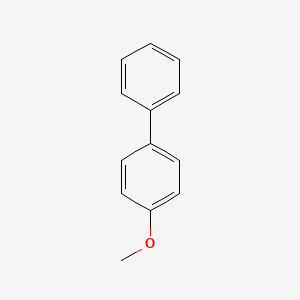 Compound has a composition a 68.2% C, 13.6% H and 18.2% O by mass.
Compound has a composition a 68.2% C, 13.6% H and 18.2% O by mass.

IR

- A notable feature of the 1H spectrum is a multiplet of nine at d1.7.
A splitting pattern of nine peaks must be produced by eight adjacent protons (8+1)
- The 13C spectrum shows the reference peak and four peaks
13C Spectrum
Peak  is due to the carbon atom in position d as it has a chemical shift of d60.7 (corresponds to a -C-O- functional group) and is connected to an even number of protons (2).
is due to the carbon atom in position d as it has a chemical shift of d60.7 (corresponds to a -C-O- functional group) and is connected to an even number of protons (2).
Peak  is due to the carbon atom in position c as it has a chemical shift of d41.5 (corresponds to a secondary carbon group) and is connected to an even number of protons (2).
is due to the carbon atom in position c as it has a chemical shift of d41.5 (corresponds to a secondary carbon group) and is connected to an even number of protons (2).
Peak  is due to the carbon atom in position b as it has a chemical shift of d24.6 (corresponds to a tertiary carbon group) and is connected to an odd number of protons (1).
is due to the carbon atom in position b as it has a chemical shift of d24.6 (corresponds to a tertiary carbon group) and is connected to an odd number of protons (1).
Peak  is due to the two carbon atoms in position a as it has a chemical shift of d22.5 (corresponds to a primary carbon group). It can be seen that the carbon atoms are also connected to an odd number of protons (3).
is due to the two carbon atoms in position a as it has a chemical shift of d22.5 (corresponds to a primary carbon group). It can be seen that the carbon atoms are also connected to an odd number of protons (3).
............
1H NMR
3-Methyl-1-butanol
| Formula | C5H12O | |
| Formula Weight | 88.2 gmol-1 |
 |
|
|
Peak Table
| Peak | Intensity | Multiplet | Proton/s |
| 1 | Reference Peak |
| 2 | 5.8 (2) | Triplet | d |
| 3 | 3.2 (1) | Multiplet of 9 | b |
| 4 | 6.1 (2) | Quartet | c |
| 5 | 3.1 (1) | Singlet | e |
| 6 | 18.9 (6) | Doublet | a |
1H spectrum
This spectrum, like all other simple 1H spectra, can be assigned by using the following criteria;
- Convert the given intensities of the peaks to integrals.
- Add all the peak intensity values together and divide by the number of hydrogen atoms in the molecule. This gives the average intensity per hydrogen atom.
- Divide each peak intensity by this average term to give a whole number (integer) value.
- Compare the chemical shift of the peak with a correlation chart to get an idea which functional groups could be present.
- Determine the multiplicity by examining the fine structure of each peak. If there are (n) adjacent hydrogens then the peak will have a (n+1) splitting pattern.
1H spectrum (expansion)
|
|
Notes
- Peak
 is due to protons in position d as it has a chemical shift of d3.6 (corresponds to a -OH containing functional group) and is a triplet (split by two adjacent hydrogens - Hc). is due to protons in position d as it has a chemical shift of d3.6 (corresponds to a -OH containing functional group) and is a triplet (split by two adjacent hydrogens - Hc).
- Peak
 is due the proton in position b as it has a chemical shift of d1.7 (corresponds to a tertiary -CH- group) and is a nontet (split by eight adjacent hydrogens - Ha and Hc). is due the proton in position b as it has a chemical shift of d1.7 (corresponds to a tertiary -CH- group) and is a nontet (split by eight adjacent hydrogens - Ha and Hc).
- Peak
 is due to protons in position c as it has a chemical shift of d1.4 (corresponds to a -CH2 group) and is a quartet (split by three adjacent hydrogens - Hb and Hd). is due to protons in position c as it has a chemical shift of d1.4 (corresponds to a -CH2 group) and is a quartet (split by three adjacent hydrogens - Hb and Hd).
- Peak
 is due to protons in position e as it has a chemical shift of d1.3 (corresponds to hydroxyl proton) and is a singlet (no splitting). is due to protons in position e as it has a chemical shift of d1.3 (corresponds to hydroxyl proton) and is a singlet (no splitting).
- Peak
 is due the proton in position a as it has a chemical shift of d0.8 (corresponds to a -CH3 group) and is a doublet (split by one adjacent hydrogens - Hb). is due the proton in position a as it has a chemical shift of d0.8 (corresponds to a -CH3 group) and is a doublet (split by one adjacent hydrogens - Hb).
|
Maluku islands, Indonesia
en.wikipedia.org/wiki/Maluku_Islands
Jump to
After Indonesian independence - [edit]. With the declaration of a single republic of Indonesia in 1950 to replace the federal state, a Republic of ...

.

AMBON
A new mosque being built in the centre of Ambon, a Christian-majority city

.

.

.
///////



















 is due to the carbon atom in position
is due to the carbon atom in position  is due to the carbon atom in position
is due to the carbon atom in position  is due to the carbon atom in position
is due to the carbon atom in position  is due to the two carbon atoms in position
is due to the two carbon atoms in position 













 .
.

 .
. .
.